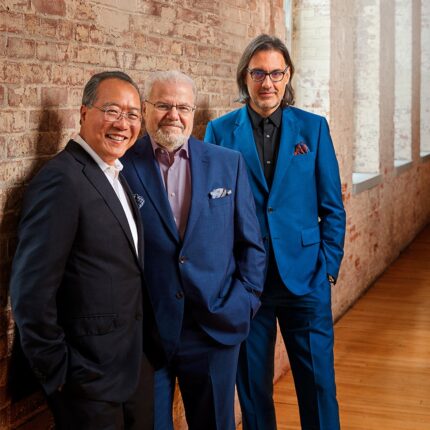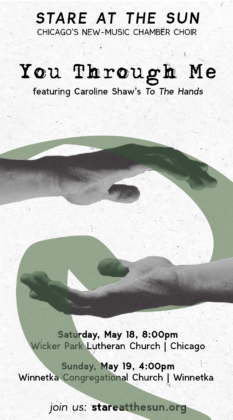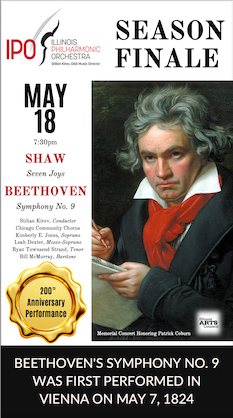A starry trio offers intimate evening of Beethoven at Symphony Center

For local listeners who have been keeping score, solo and orchestral appearances by Yo-Yo Ma the virtuoso have been narrowly outpaced by appearances by Ma the chamber musician.
So it was again on Saturday night at Symphony Center, where the cello superstar, along with colleagues Emanuel Ax, piano, and Leonidas Kavakos, violin, took advantage of the absence of the Chicago Symphony Orchestra (just returning from its most recent European tour) to present a program of Beethoven works for piano trio.
Orchestra Hall quite predictably was packed for the occasion, the audience so unrestrained in its admiration for the performances that fans spontaneously applauded between nearly every movement of the three works that Ma and friends offered them. One could easily understand why, without endorsing such concentration-ruining behavior as a rule of thumb: Beethoven playing doesn’t get any better than this.
That sense of shared enjoyment extended to the convivial interaction on stage. Here were three formidable solo instrumentalists coming together as an ensemble whose primary goal was to illuminate and draw us deeply into three works of musical genius from Beethoven’s early and middle periods.
With Ma, Ax and Kavakos it was never a matter of denying their distinct musical personalities as it was of melding those personalities in the service of Beethoven.
Of late, the ad-hoc ensemble has been playing and recording trio arrangements of Beethoven symphonies, pairing them with actual Beethoven piano trios. This “Beethoven for Three” series thus far has yielded two discs on Sony: the first holding transcriptions of the Second and Fifth symphonies, the second including an arrangement of the “Pastorale” Symphony by pianist Shai Wosner, a frequent soloist with Daniel Barenboim.
It was Wosner’s piano-trio reduction of Beethoven’s Symphony No. 1 in C Major that Ma and colleagues offered as the centerpiece of their program on Saturday, flanked on either side by the two piano trios of Beethoven’s Opus 70.
Wosner did his job most effectively, transferring the wit and exuberance of Beethoven in post-Haydnesque mode to the chamber medium. What is sacrificed in sheer symphonic weight is gained in added transparency of texture and clarity of formal design. One misses those bold eruptions of timpani so characteristic of Beethoven, even early in his output, but, well, something had to be lost in translation. The important thing is that the Beethovenian essence is there.
Here the players’ finely poised, carefully balanced voicing was much to be appreciated, as were the rhythmic crispness and lyrical elegance that marked their reading as a whole. For the Adagio opening of the finale, Wosner allowed each artist to extend the short phrase leading into the main body of the movement all by himself—a delightful effect Ma, Ax and Kavakos nudged just enough to draw chuckles from the crowd.
The threesome plunged into the opening movement of the Piano Trio in D, Op. 70, no. 1 (“Ghost”) with infectious spirit, Ax’s rippling pianism nicely set off by the suave phrasing of Kavakos and Ma. The music moved forward in a way that felt spontaneous, as if guided by a single probing sensibility. The otherworldly mystery of the Largo assai that gives the work its subtitle came across with spooky immediacy, making the slow movement the beating heart of their reading.
The work’s companion piece, the Piano Trio in E-flat, Op. 70, no. 2, may be less well-known, but Beethoven offers plenty to catch the ear, even if the mood is generally more lyrical and genial than dramatic and propulsive. If Ma and colleagues made ingratiating work of it, “work” hardly seemed apt to describe the relaxed fluency and concentration of their musical conversation. The violinist and cellist traded singing, later brusque, figures over the pianist’s undulating accompaniment.
If one had to pick nits, it would be to point out that Kavakos’ intonation briefly strayed from the mark at times and that his rather sparing use of vibrato made for occasional thinness of tone, especially alongside Ma’s richer sonority and Ax’s firmness. But the violinist carried the melodic burden with unshowy command whenever the fiddle needed to do so. (It’s worth noting that Saturday’s chamber concert marked the violinist’s third appearance of the season at Symphony Center, following solo engagements with the CSO last fall.)
Naturally the house was up for grabs by the end. The trio responded not with more Beethoven but with Schubert—the sublime slow movement from the latter’s Piano Trio No. 1 in B flat (D898). It need only be said that Ma, Ax and Kavakos savored the outpouring of Schubertian melody beautifully.
Yo-Yo Ma will return to Orchestra Hall on April 7 for a joint recital with pianist Kathryn Stott. cso.org
Posted in Performances




